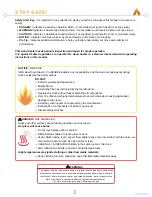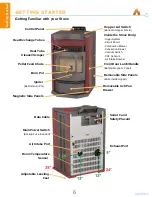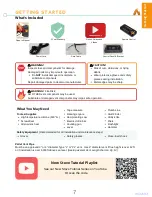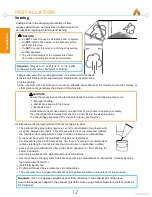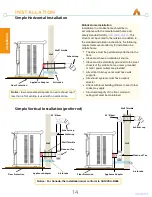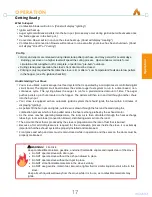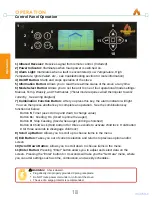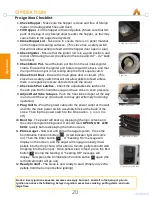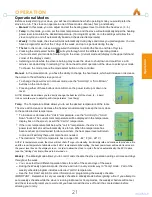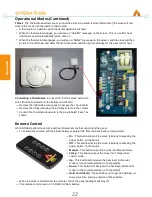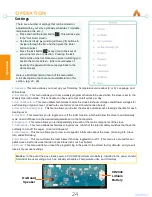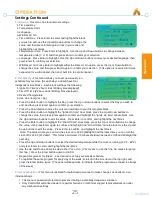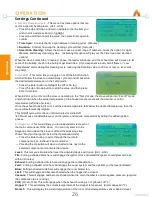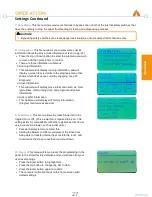
12
Installation
Installation
The pellet venting pipe (also known as L vent) is constructed of two layers with
air space between the layers. This air space acts as an insulator and reduces
the outside surface temperature of pipe to allow a clearance to combustibles.
A cap must be used at the termination of type L vent chimneys.
For elevations above 5,000 feet above sea level, 4" venting is recommended.
(Unless total length of venting is less than 6' and uses no more than 1 elbow)
Some venting manufacturers offer pellet stove adapters for their venting for
easier installation.
Seal all pipe joints per the pipe manufacturer's instructions.
Install pellet venting through wall and connect vent/pipe to stove
Mark and cut wall for venting penetration on exterior wall (if needed).
Install wall thimble (sold separately) per manufacturer specifications.
Install venting.
Use a sealant (such as silicone) to create an effective vapor barrier at the location where the chimney or
other component penetrates the exterior of the structure.
1.
2.
3.
4.
Secure exhaust venting system to the Stove per the pipe manufacturer’s instructions. (Usually by using
high-temp silicone (500°+)
Install termination cap.
Confirm all required Stove clearances to combustibles.
The vent must have a support bracket every 5' of pellet vent when on the exterior of the structure.
Venting
Do
NOT
connect to any air distribution duct or system.
Do
NOT
install a flue damper in the exhaust venting
system of this stove.
Do
NOT
Connect this stove to a chimney flue serving
another appliance.
The structural integrity of the manufactured home
floor, wall, and ceiling/roof must be maintained.
Adding bends in the exhaust path restricts air flow,
reduces performance, and provides a collection point for
ash deposits requiring more frequent cleaning.
CAUTION!
Required:
Only use a 3" or 4" type "L" or "PL" pellet
venting system
(such as DuraVent or Selkirk)
.
Improper drafting.
Smoke may seep into the house.
Excessive soot.
Ensure that your stove venting terminates above the stove or the following may occur:
Install at least one smoke detector on each floor of your home to ensure your safety.
They should be located away from the stove, and close to the sleeping areas.
You should have separate CO monitors for areas near the stove
CAUTION!
Required:
Use a 3" appliance adapter as your first connection to the exhaust port of the stove.
Secure the appliance adapter to the exhaust port of the stove using a high temperature sealant. (Such as
RTV silicone)
Summary of Contents for HP22N
Page 2: ......
Page 38: ...Schedules Repairs Date Work Done Date Work Done...
Page 39: ...Schedules Repairs Date Work Done Date Work Done...



